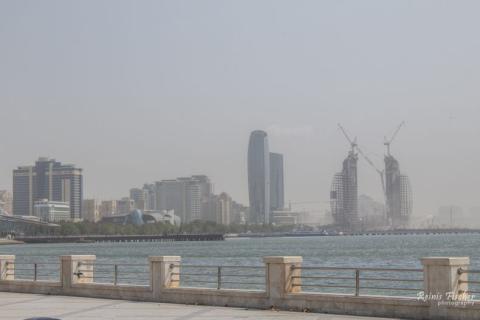Baku Boulevard also is known as National Park is a promenade established in 1909 which runs parallel to Baku's seafront.
Its history goes back more than 100 years, to a time when Baku oil barons built their mansions along the Caspian shore and when the seafront was artificially built up inch by inch.
I first visited Baku on August 2019, and Baku boulevard was our first stop after arriving at Baku Railway station. To get here we caught a street taxi
The park stretches along a south-facing bay on the Caspian Sea. It traditionally starts at Freedom Square continuing west to the Old City and beyond. Since 2012, the Yeni Bulvar (new boulevard) has virtually doubled the length to 3.75 km, extending the promenades to National Flag Square.

At the main entrance in Baku boulevard
In 2015 White City Boulevard added a further 2 km to the east of Freedom Square and reports have suggested that eventually, the boulevard might be as long as 26 km, including Bibiheybət.

Baku Boulevard
Originally the boulevard was established to connect the oilfields in Bibi Heybet as part of the urban development projects by Municipal Horticultural Commission.

Modern Architecture of Baku
Until the early 20th century, the avenue had mansions on one side and seafront on the other. There were no trees. Tons and tons of fertile soil were imported to enrich the soil quality. Baku's Mayor, R. R. Hoven, supported by the richest industrialists, passed a decree in the 1880s saying that all ships entering Baku harbors from Iran had to bring fertile soil with them. In reality, this was a kind of "tax" or "duty" imposed for the right to use the harbor and load up with oil. Within a very short time, enough soil was deposited, and the parks that characterize the city's seafront today were developed.
